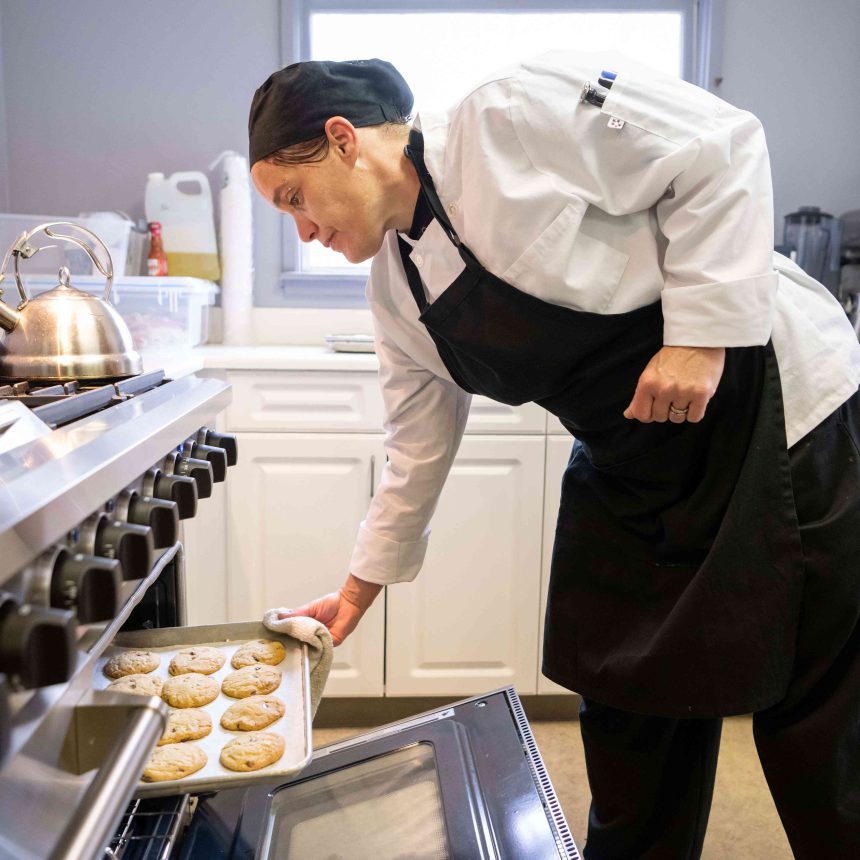No one understands the power of food better than we do. We know it can bring people together, fill them with joy, and connect individuals through deep conversations over their favorite meals. But at Father Joe’s Villages in San Diego, food provides something else entirely: hope for a better future.
Since 1950, Father Joe’s has been helping the San Diego community by providing people experiencing homelessness with access to medical care, regular meals, vocational training, and more services. Over the past 75 years, the nonprofit has grown into an expansive campus that houses more than 2,000 people a night and provides them with opportunities to learn new skills. For students seeking culinary training through Father Joe’s, that includes not only learning how to cook, but also how to land a job in any acclaimed professional kitchen.
“I am just so thrilled to be here,” says chef Helen Coyne, who previously spent time working with the International Rescue Committee and Kitchens for Good as a baking instructor, before now running the 14-week Culinary Arts Program at Father Joe’s. In her class, students learn everything from core cooking techniques to knife safety and kitchen hygiene, all so they can move on to work as professional chefs.
“It’s 14 weeks, Monday through Thursday, from 8 a.m. to 3 p.m.,” Coyne notes. “So it is pretty intensive.” But it’s an intensity the students are thankful for in the end.
“I didn’t know what to expect, but if I had expectations, I feel like it’s better than what I thought,” recent program graduate Gillian Grace shares, tearing up as she explains just how impactful the experience has been for her. “I think it’s a phenomenal program. I think a lot of people think it’s going to be a little home cooking class, and it absolutely is not,” Grace adds with a laugh. “But actually having the technical training has been amazing.”
The facilities that students learn in are used for more than just classes — the program also leverages the industrial kitchen that’s available to serve thousands of meals a day to other clients at Father Joe’s. “We do a frozen meals program where we serve some of our clients who are in permanent supportive housing, and those are at different locations [from] the Village,” Coyne explains. “We take food from lunch and dinner, package it, label it, freeze it, and send it out, and the culinary students help with that.”
For many students like Grace, the client-focused aspect of the class is an equally valuable foray into a new field. She says that after spending time with a private chef as part of the program, she’s considering entering this area of the culinary industry. Grace explains that she was inspired to follow this path because “When you’re able to take care of people through food and cooking, you get to be so creative. You can really show how much you care.”
There is, however, one challenging portion of the course: picking a favorite dish. When asked to recall their favorite culinary creation from the program, neither Grace nor Coyne could choose just one — instead they rattled off an entire menu, including chickpea and roasted cauliflower soup, ceviche, jackfruit carnitas, and braised short ribs. Which sounds exactly like the lineup at a restaurant that we’d love to score a reservation for.
As for her other students, Coyne hopes they stay as positive as Grace about their futures. “You just have to keep an open mind,” she emphasizes, “because you never know what’s coming.”






